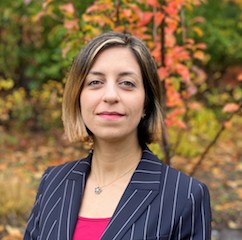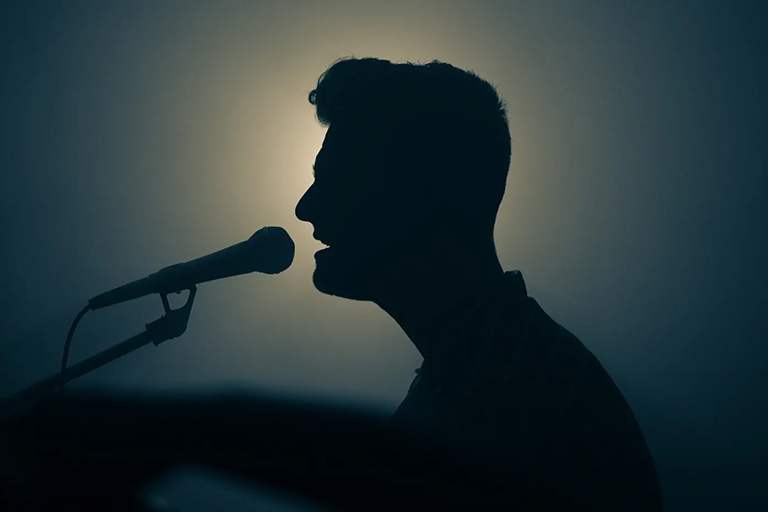Q&A with Maryam Naghibolhosseini on innovative voice research
Michigan State University is a top global research university and a member of the prestigious Association of American Universities, widely regarded as among the top research-intensive institutions in North America. The following story highlights one of the many examples of MSU’s research excellence and innovation.
Maryam Naghibolhosseini is an assistant professor in the Department of Communicative Sciences and Disorders at MSU. She was the recipient of the National Institutes of Health, National Institute on Deafness and Other Communication Disorders, Early Career Award in 2022 and the Career Development Award in 2019. She was also bestowed the American Speech–Language–Hearing Association’s Early Career Contributions in Research Award in 2020 and the Acoustical Society of America’s Young Investigator Grant in 2018 by Women in Acoustics. Naghibolhosseini’s latest research uses high-speed imaging technology to improve our understanding of vocal disorders.
Q: What is a vocal disorder?
A: Voice disorders are very different from other kinds of disorders such as hearing disorders. It is more straightforward to determine what a hearing loss is, but a voice disorder could be very subjective. Someone might not like the sound of their voice, or a family member or friend might think there is something wrong with their voice which leads them to go to visit a doctor regarding their voice. Usually, a vocal disorder is when your vocal cords don’t vibrate normally for some reason generating a sound that may not seem normal.
For example, you might listen to someone's voice and think, that is a raspy voice, but you might really like their raspy voice when they sing. Think about someone like Louis Armstrong singing, “What a Wonderful World.” Does he sound like he has a vocal disorder, and do you want to see his voice changed?
Q: How are vocal disorders diagnosed?
A: Usually, clinicians do a voice assessment where they do a perceptual assessment of the voice by having the patient read several sentences and the clinicians rate the quality of the voice in terms of several characteristics such as breathiness, pitch and loudness.
We also use objective tools and instruments to measure the characteristics of the voice. For example, we use laryngeal imaging and videostroboscopy to see what is happening to the vocal cords when the patient speaks or sings. The problem with videostroboscopy is that considering the vocal cords vibrate at a rate of approximately 100-300 times per second, the videostroboscopy can only take 30 images in a second. So, we can’t capture enough images from every cycle of the vocal fold vibration.
To evaluate the movements of the vocal cords, usually, an endoscope is put inside the back of the patient’s mouth to evaluate the function of their vocal cords. This is uncomfortable and it’s nearly impossible for the patient to speak or sing for any length of time with the endoscope in their mouth.
Q: How does your research solve these problems?
A: Our innovative solution to help diagnose and understand these disorders is to use a high-speed camera. Having thousands of images per second can provide a lot of information about what our vocal folds are doing during voice production. We use artificial intelligence to analyze our big datasets consisting of millions of images. Our goal is to develop clinically important measures from the high-speed imaging data. In one of our main projects, we use a numbing nasal spray and a thin endoscope that is connected to a camera and goes through the nose and sits on top of the vocal folds to view them in action during connected speech (using words instead of making one sound like “ah”). Most patients don't feel anything.
I want to understand what is actually happening to a patient’s vocal folds when they have a voice disorder and the connection between our larynx (voice box) and vocal folds that creates a sound that makes clinicians think the patient has a voice disorder.
Q: Why is MSU the best place for you and your research?
A: When my husband, Mohsen Zayernouri, was offered a job in the Department of Mechanical Engineering at MSU, I was curious about what I could do next. When I looked into the Department of Communicative Sciences and Disorders, I found Dimitar Deliyski — who would become my post-doctorate mentor — and learned about his cutting-edge research studying voice disorders. I was amazed by the overlap between hearing (my previous research) and voice research. I started my position as an assistant professor with the department in 2018.
A few years ago, I received a grant from the National Institutes of Health, which was the first grant to explore the use of a high-speed imaging camera to study connected speech or the way we normally speak, making MSU a leader in this area, which is very exciting.
My research is interdisciplinary and multidisciplinary from voice and hearing science to artificial intelligence. My research area and expertise allow me to collaborate with diverse researchers across the MSU campus. I work with other faculty in our department, faculty of engineering and other clinicians. MSU provides me with the tools and the people that I need to excel in my work, and I very much enjoy working with the students.
By Emilie Lorditch
